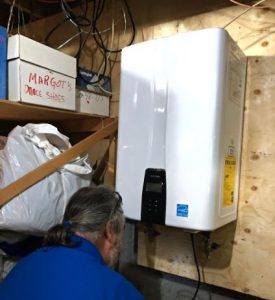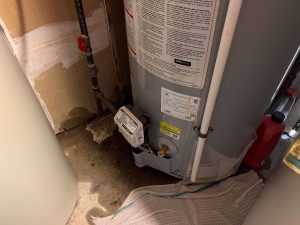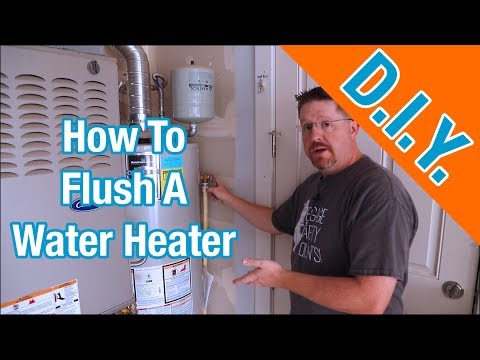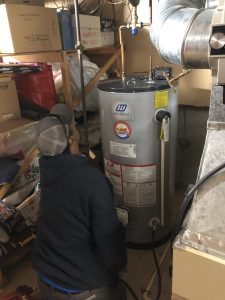We Ottawa residents depend on our water heater tanks to give us a steady supply of hot water day after day. And usually, that’s what happens. But even the most reliable household appliance can develop issues sometimes.
When you have no more hot water or if you’re dealing with a hot water heater not working correctly, you have to interpret what the tank or tankless heater is trying to tell you. Read on to find out some of the most common bad water heater symptoms that need fixing.
How to Diagnose Your Water Heater
If your water heater not working is giving you grief, but you’re not quite ready to call in the expert, you should take a systematic approach when trying to identify the underlying problem. Diagnosing issues with your water heater is best left to the experts, but there’s steps you can take if your water heater isn’t working properly.
- Visual Inspection: Start by visually inspecting your water heater for any obvious signs of problems, such as leaks, corrosion, or rust buildup. Examine the pipes, connections, and valves for signs of damage or deterioration.
- Check Pilot Light (Gas Heaters): If you have a gas water heater, check that the pilot light is lit. If not, relight it according to the manufacturer’s instructions. If it doesn’t stay lit, there may be an issue with the thermocouple or gas supply that requires further investigation.
- Test Power Supply (Electric Heaters): For electric water heaters, verify that the unit is actually receiving power. Check the circuit breaker or fuse box to ensure the breaker hasn’t tripped or the fuse hasn’t blown. If the power supply is intact but the water heater still isn’t working, there may be a problem with the thermostat or heating elements.
- Check Water Temperature Settings: Verify that the temperature setting on the water heater is appropriate. If the water is too hot or too cold, adjust the thermostat accordingly.
- Listen for Unusual Sounds: Pay attention to any unusual sounds coming from the water heater, such as banging, popping, or rumbling noises.
- Check for Leaks: Inspect the area around the water heater for any signs of leaks, including puddles, dampness, or water stains. Even small leaks can indicate underlying issues that need to be addressed.
- Evaluate Water Flow: Test the flow of hot water from multiple faucets throughout your home. If you notice reduced water flow or inconsistent hot water delivery, there may be obstructions in the plumbing or problems with the water heater itself.
- Consider Age and Maintenance History: You should always take into account the age of your water heater and its maintenance history. Older units may be more prone to issues and may require more frequent repairs or replacement.
1. Water Leaking
 >Water leaking from your water heater tends to look very dramatic, even scary. However, that perception is not always accurate. It all depends on the source of the leak.
>Water leaking from your water heater tends to look very dramatic, even scary. However, that perception is not always accurate. It all depends on the source of the leak.
For example, two water leak problems are actually very simple to fix — a leaky drain valve that just needs to be closed entirely or leaky water inlets and outlets that have to be tightened. You may even notice that your water heater keeps turning off.
On the other hand, leakage from the bottom of the water heater tank probably means that your water heater has rusted from the inside out. By the time corrosion has gotten to this stage, repair is impossible, and it’s time to find a replacement hot water heater. The good news? Today’s water heaters, tank-style or the new tankless types, are more energy-efficient than ever.
How To Fix It
First you have to identify where the leak is coming from. If the leak is coming from a connection point, such as a fitting or a valve, try tightening it with a wrench (being careful not to over-tighten, as that could damage it further).
If tightening doesn’t work, you might need to replace parts, such as a faulty valve or corroded pipes.
If the water heater tank itself is leaking, you might be able to get away with patching the water tank with a leak repair kit, but this should only be done as a temporary measure. With a leaking tank, the only real way to fix it is to call up a professional plumber like Hot Water Ottawa and replace the tank itself.
2. Smelly Water
Water is not supposed to have a colour, taste, or odour. That’s part of the beauty of the fresh, clean water that generally flows from your faucet. Occasionally, though, your tap water will have a foul odor like sulphur, with a distinctive aroma of rotten eggs. If the problem affects only the hot water, it is most likely stemming from your water heater.
Why? When you leave water for a long time in the tank without using it, sulphate bacteria will grow in the hot water heater, infusing it with their distinctive scent. Once this happens, it will be extremely difficult to get rid of the smell. Water heater replacement is likely to be the most cost-effective solution possible.
How To Fix It
The heater should be flushed. This is a task that should be done at least once a year to prevent a buildup of sediment and minerals.
Here’s how:

- Turn Off the Heater: Before flushing, turn off the power supply to your hot water heater. For electric heaters, switch off the circuit breaker, and for gas heaters, set the thermostat to the pilot setting.
- Allow the Water to Cool: Hot water can cause burns, so allow the water in the heater to cool for several hours before flushing.
- Turn Off the Cold Water Supply: Locate the cold water inlet valve near the top of the water heater and turn it off to stop the flow of water into the tank.
- Attach a Hose: Connect a garden hose to the drain valve at the bottom of the water heater. Ensure the other end of the hose is directed to a safe drainage location, like a floor drain, bucket, or outside.
- Open the Pressure Relief Valve: To allow air into the tank and enable smooth drainage, open the valve on the top of the heater.
- Drain the Tank: Open the drain valve at the bottom of the heater and let the water flow out completely. You may need to open a hot water faucet in your house to help the tank drain more efficiently.
- Flush the Tank: Once the tank is empty, turn on the cold water supply briefly to flush out any remaining sediment or debris. Repeat this step until the water runs clear from the drain hose.
- Close the Valves: Close the drain valve and the pressure relief valve.
- Refill the Tank: Turn on the cold water supply to refill the tank. Keep the hot water faucet open until a steady stream of water flows from it, indicating the tank is full.
- Restore Power: For electric heaters, switch the circuit breaker back on. For gas heaters, set the thermostat to your desired temperature.
If this process seems daunting, have no fear! The experts at Ottawa Home Services are happy to help with this process.
3. Rusty Water
Similar to smelly water, brownish rusty water has that “ick” factor, indicating that your water heater is not working right. Check that the rusty discolouration is only related to the hot water. (Rusty water from both hot and cold faucets means trouble with your hot water piping.)
If so, this is a sign of rust inside your water heater. Some of the rust dissolves in the water before reaching your faucet. Rust inside the body of the hot water heater is always a bad sign, this indicates that your tank is failing and you will need a new one soon.
How To Fix It
Rusty water coming from your hot water taps could indicate corrosion inside the tank (if your cold water is also rusty, it might indicate a problem with your plumbing system pipes). Flushing the tank can sometimes help, but if the issue persists, you’ll likely need to call a plumber and get the tank replaced.
4. Water Heater Making Loud Noises
Water heaters often make a whole symphony of loud noises. Popping indicates that a thick crust of mineral sediment has accumulated inside the heater; a skilled professional may remove it by flushing the heater interior and, for an electric water heater, cleaning the burner. Sizzling usually means that your water heater is leaking badly and probably cannot be repaired.
On the other hand, banging, ticking, humming, and even screeching sounds are not actually originating in the hot water tank itself. They are signs of other issues that need plumbing repair or adjustment.
How To Fix It
Loud noises such as banging or rumbling can be caused by sediment buildup in the tank. Flushing the tank can often resolve this issue, but if the noise continues, it may indicate more serious problems that require professional attention.
If you hear a boiling noise, your hot water heater might be overheating as a result of pressure buildup. This is very dangerous and you should call a plumber immediately if you hear this.
5. Water Too Hot
The old saying “You can’t have too much of a good thing” doesn’t quite hold true in this case. Water that is way too hot — especially when the temperature increase occurs suddenly — means your water heater is not working the way it should.
If your water heater thermostat is functional and your T & P valve isn’t blocked, this problem is probably due to mineral buildup, which has reached the point of causing the element to overheat.
How To Fix It
If your water is too hot, check the thermostat on your water heater. Adjust it to a lower temperature if necessary. If the thermostat is set correctly and the water is still too hot, have the tank flushed ASAP before it develops a leak. There may be a problem with the thermostat or heating element that requires professional repair.
6. Not Heating Up
Besides overly hot water, there’s the opposite problem — water that never heats past a decidedly “blah” lukewarm stage. Funnily enough, a couple of potential reasons are the same as for water that’s too hot — mineral sediment or a broken thermostat.
You also could be facing a couple of other possibilities, such as a broken dip tube, faulty heating element or a damaged immersion heater. Call a hot water specialist for professional water heater repair.
How To Fix It
If your water heater is not heating up at all, check the power source (gas or electricity) and the thermostat settings. If these are fine, there may be an issue with the heating element or thermostat that needs to be repaired or replaced.
7. Water is Cold
When you turn on your hot water tap and only get cold water, it’s a clear indication that your water heater isn’t functioning properly. Several factors could be at play here, including a malfunctioning heating element (in electric heaters), a pilot light issue (in gas heaters), a faulty thermostat, or sediment buildup in the tank inhibiting heat transfer.
Professional inspection and repair are usually required to identify and address the specific cause of the problem.
How To Fix It
If your water heater is not producing hot water, check the pilot light (for gas heaters) or the power supply (for electric heaters). If these are functioning properly, there may be a problem with the heating element or thermostat that requires professional repair.
Try relighting the pilot light if it’s out. If that’s not the issue, it might be a problem with the gas valve. Be very careful that you’re not dealing with any gas leaks—if you smell gas around your hot water heater, call your gas company immediately and evacuate the house.
8. Low Water Flow
Low water flow from your hot water taps can be frustrating and inconvenient and is often a symptom of restricted water flow through the plumbing system. Sediment, mineral deposits, or corrosion can accumulate in pipes, inlet valves, or outlet valves, impeding water flow.
How To Fix It
Flushing the tank and cleaning or replacing any affected components can help restore proper water flow. However, if the problem persists, it may indicate more significant plumbing issues that require professional attention.
9. Damaged Pressure Relief Valve
The pressure relief valve (PRV) is a critical safety component designed to release excess pressure from the water heater tank. When pressure within the tank exceeds safe levels, the PRV opens, allowing water to discharge safely.
A damaged or malfunctioning PRV can compromise the safety of the water heater system, leading to catastrophic failures such as tank ruptures or explosions. Signs of PRV damage include leaking or dripping water around the valve or improper operation during testing.
How To Fix It
Prompt replacement of the PRV by a qualified plumber is essential to ensure the continued safe operation of your water heater. If the pressure relief valve is damaged or leaking, it can build up too much pressure and
10. Sweating Water Heater
Sweating or condensation on the exterior of a water heater occurs when warm, moist air comes into contact with the cooler surface of the tank.
While some level of sweating is normal, excessive condensation can indicate a hot water heater problem. Inadequate insulation around the water heater allows warm air to penetrate the tank’s exterior, leading to condensation formation.
Setting the water heater temperature too high can also exacerbate sweating by increasing temperature differentials. A malfunctioning temperature pressure relief valve may also contribute to excessive sweating.
How To Fix It
Proper insulation, temperature adjustment, and PRV maintenance are essential measures to mitigate sweating and prevent water damage to surrounding areas. Ensuring proper ventilation and replacing the PRV can help resolve this issue.
Meet The Ottawa Water Heater Specialists
You know you can count on Hot Water Ottawa for all your water heater needs – whether you need to buy vs. rent a water heater. We are water heater specialists with the skills and knowledge you’re looking for. When your water heater isn’t working, you need experts how know how to deal with all sorts of water heater problems.
Whether you need water heater repair or you’re shopping for a new water heater, talk to us today!
